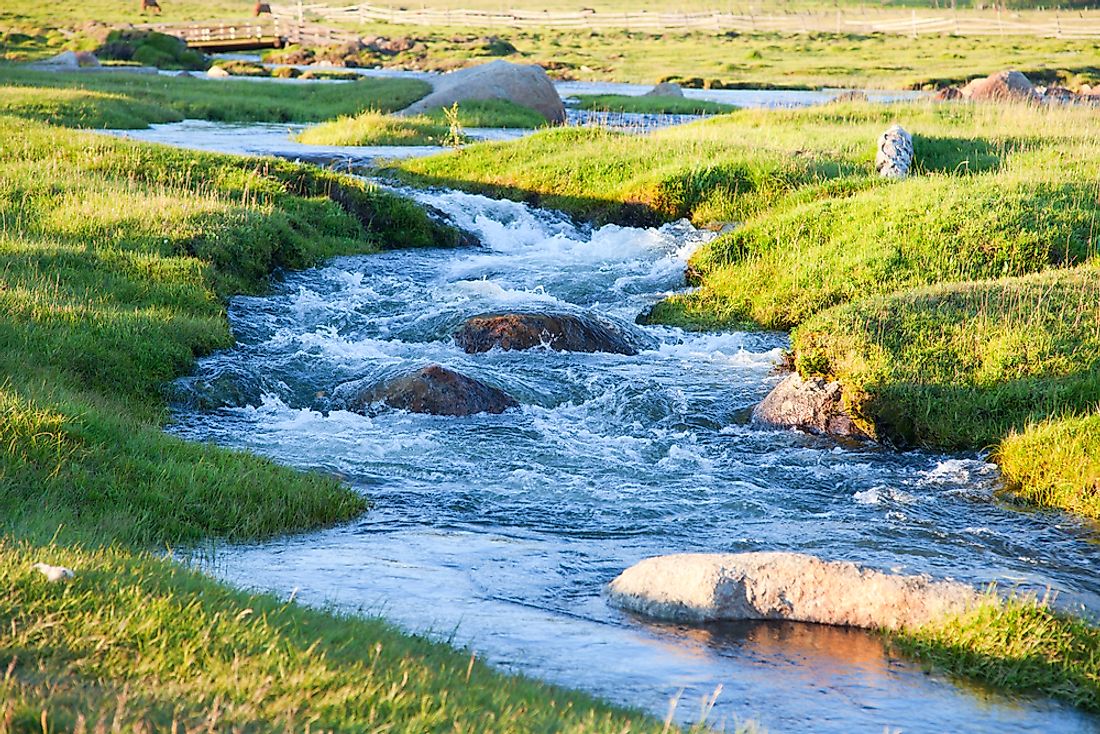What Is A Stream In Geography?

Rivers and streams are an important source of water for most households around the world. However, not many people know the difference between a stream and a river. The two are often used interchangeably since both the river and the stream are moving water bodies. Although the two may appear synonymous, that is not true. Rivers are formed by the confluence of several streams and are larger, deeper, and longer than a stream and often empty into large water bodies such as oceans and lakes. Streams are smaller and shallower so that one can often walk across them without being swept away.
Definition of a Stream
A stream is a small water body with surface water flowing within the bed and banks of the channel. It exists by itself and joins with other streams to form a large river. A stream may be permanent or seasonal depending on the source of its water and the climate and geography of its course. In some parts of the world, especially North America and New Zealand, a stream is also known as a creek since it is difficult to differentiate between a creek and stream.
Characteristics of a Stream
For a moving body of water to qualify as a stream, it must either be perennial or recur. Recurring or intermittent streams have water at least some parts of the year. The characteristic of a stream is determined by it gradient. The gradient of a stream is determined by its base level of erosion, a point at which the stream joins a water body. Streams form floodplain is the base level is high and cuts through the underlying strata if the base level is low. Streams also have particular profile starting with a steep gradient and eventually evolving into streams with a low gradient. In between, the stream meanders due to erosion and deposition of bank material. Streams may also carry material such as sediment depending on its velocity.
Sources of a Stream
Streams are important components of the water cycle. It derives most of its water from rainfall and snow. Most of these waters are taken up into the atmosphere through the process of evaporation and evapotranspiration. Some of the water sinks into the soil by infiltration to form the groundwater, much of which re-enters the stream. The rainwater may also flow off on the surface as runoff. The runoff starts as a thin film of water and combines with other runoffs to form sheet runoff. When the sheet runoff is concentrated in a channel, it forms a stream.
Types of Streams
The stream can be broadly categorized as perennial or intermittent streams depending on the characteristics of their flow. Perennial streams are streams that flow throughout the year and are common in the humid area where the ground and surface waters systems are connected. The groundwater supplies water to the streams even during dry seasons, ensuring that the streams flow all year round.
Intermittent streams are streams that only flow when significant rainfall occurs. The intermittent streams are also referred to as seasonal streams. The streams are often dry during the dry season and are common in deserts. Other streams may only flow only during and immediately after precipitation. Such streams are referred to as ephemeral streams. Some people have argued that ephemeral streams are simply surface runoff.











